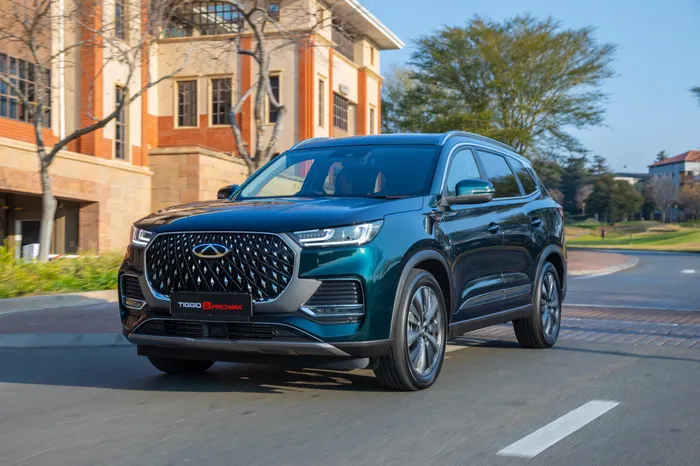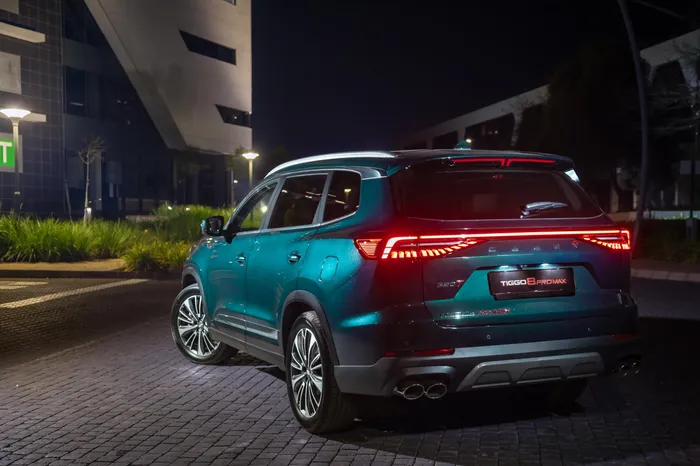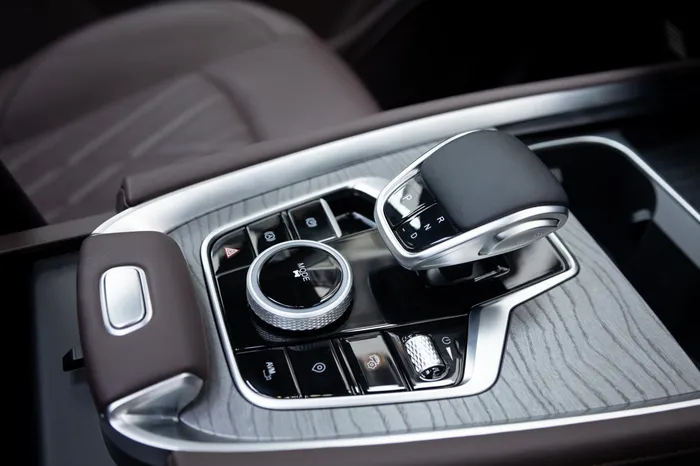Experience luxury on a budget: driving impressions of the Chery Tiggo 8 Pro Executive

From the front the Chery Tiggo 8 has a “warp speed grille” adorned with the Chery logo.
Image: Supplied
When Chery was introduced back into the country only a few years ago, many raised their eyebrows following their first cheap and nasty offerings.
But there has been a paradigm shift in its perception as South Africans embrace the brand, placing the Chinese manufacturer in the top half of the sales chart.
They provide very decently manufactured, technologically advanced vehicles, and there's no need for any extras because they simply have them all.
Most importantly for budget-conscious South Africans, they provide fantastic bang for buck.
They’re also involved in a number of sponsorship and supplier agreements and CSI projects, making them part of the broader South African community.
I hadn’t driven one of their products for a while and was again reminded why they’re so popular when the seven-seater Chery Tiggo 8 290T Pro Executive arrived in the driveway.
Exterior
From the front, it’s a striking design with what they call a reinterpretation of the “galaxy full of stars” or the “warp speed grille” adorned with the Chery logo.
At the back, the light clusters are connected by an LED light bar that lights up from the centre to the lower edges of the taillights when the car starts up.
It stands on attractive 18-inch alloy wheels that highlight the bold side view as well as the satin silver roof rails.
Engine
Under the bonnet, it has its 1.6-litre turbo-charged T-GDI engine that delivers 145kw and 290Nm coupled to a seven-speed Dual Clutch Transmission driving the front wheels, but more on that later.
Interior
It’s the interior, though, that impresses, and you wonder how they manage to make it look and feel so premium at the price.
It’s uncluttered with ample soft-touch surfaces and some faux brushed Kevlar, and to be honest, it would not feel out of place in any of the German SUVs.
As with most modern cars, the dashboard is dominated by glass screens.
Behind the steering wheel are two connected 12.35-inch screens that together form a digital screen of 24.7 inches.
The touchscreen infotainment screen with Apple CarPlay and Android Auto is easy enough to use once you get used to it, providing quick response and clear graphics. Most of the car’s set-up functions are also accessed via the screen.
The seats are really comfortable, and on a 250-kilometre round trip to Carletonville, they provided ample support.
With the driver’s seat set for my rather tall frame, there was lots of room for rear passengers, while the third row of seats would be fine for adults on shorter trips, but they will be taken care of with their own air conditioning vents.
I’m generally not a sunroof person, but the panoramic roof provided a cosy interior on some of the coldest days we’ve had in Gauteng.

The rear light clusters are connected by an LED light bar that lights up from the centre to the lower edges of the tail lights when the car starts up.
Image: Supplied
Behind the wheel
Driving the Tiggo 8 was a bit of a mixed bag experience.
Like many Chinese cars, it suffers from quite a bit of turbo lag on pull-away, and on a couple of occasions, I unwittingly lunged forward in traffic, causing a few raised eyebrows.
Gearbox calibration is still not quite there yet, but it is a lot better than when the first cars were introduced here.
However, once it's on the move, it quickly moves through the cogs and settles down to an easy drive.
At highway cruising speeds, there’s very little road or wind noise, allowing me to use Bluetooth in a normal tone of voice without having to increase the volume.
Passing slower traffic and trucks on the narrower parts of the N14, it picked up speed easily with some strained engine noise in the cabin before settling down again.
It wasn’t the case, though using adaptive cruise control on the highway.
There were two things I noticed.
The first is that if you set it on the closest spacing from the car ahead and it gets to that position, it switches off, so you have either reset it or adjust it to the mid-range, which in South Africa means other drivers think the gap is for them.
The second is that once the driver ahead moves across, the car doesn’t gear down, and so it picks up speed very slowly, causing some hand gestures from the other driver and flashing lights from the car behind you.
You can, of course, just push the accelerator to power forward, but it’s worth noting.
Our test unit had clocked just over 10 000 kilometres, and as a press test car, those probably weren’t gentle Sunday drives.
There were no rattles or squeaks or scuff marks in the interior, testament to the car’s build quality.
The suspension proved to be well up to the task, taking care of some pot-holed stretches of tar both on the N14 and the drive to the entrance of Carletonville.
The steering is a bit vague, but I doubt owners will be fazed, and it’s acceptable for a vehicle of this nature.

The interior of the Tiggo 8 Pro is neatly put together.
Image: Supplied
Fuel economy
Something else that has been a common thread about Chinese cars is their thirst for petrol.
I made a point of driving in Eco Mode for most of the week (there’s also Normal and Sport) to see what the results would be.
To be honest, the difference in performance between Eco and Normal isn’t hugely significant, so it made little difference to my driving style.
Against a claimed 7.0 l/100km, when the car went back, it stood on 8.9l/100km.
That’s really not too bad considering the size and weight of the car, bearing in mind most of the driving was done with just me behind the wheel.
Overall, the Chery Tiggo 8 290T Pro Executive provided a satisfying experience, and it’s understandable why people with families would consider it and, in fact, shouldn’t ignore it, especially because it has seven seats and is so well-specced for R529 900.
Related Topics: